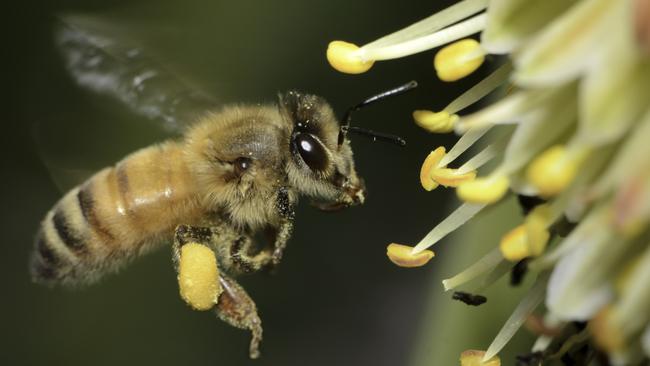Scientists create pollinating drones in the event of honey bee extinction
MORE than 1.4 billion jobs rely on this threatened part of our ecosystem. Could these tiny drones save us from ruin?

BEE populations are experiencing a truly worrying decline around the world, forcing scientists to imagine contingency plans if their numbers continue to drop off.
It’s easy to forget but humans have a close and immensely dependent relationship with the honey bee, the extinction of which would have devastating ramifications for the Earth’s ecosystem.
Last year, scientists warned of the dire threat to human welfare if bee populations disappeared. A large proportion of the world’s food supply is directly, or indirectly, affected by honey bee pollination as three-quarters of all crops depend on pollinators.
According to estimates, bees are responsible for about 1.4 billion jobs worldwide.
The point is, we really need them. So Japanese scientists have designed a potential backup prototype, just in case.
They created a mini hummingbird-sized drone, designed to mimic the pollinating qualities of a bee.
The drone has a strip of fuzz outfitted with horsehair paintbrush bristles that are coated in a sticky gel. The gel, which also acts as a camouflage, lets the drone pick up and release pollen grains from flower to flower.
A study’s of the drones potential and efficiency was published last week in the journal Chem.
“The global pollination crisis is a critical issue for the natural environment and our lives,” the researchers wrote. “The need to develop an innovative pollination tool that does not require time and effort to achieve pollination with a high success rate is urgent.”
However the drones, of course, can’t produce honey and there are still major advancements needed before they can operate without human help. Such technology developments using GPS and artificial intelligence are still far from viable, at least financially.
However the project does illustrate the sad necessity of exploring contingency options.
Among bees — the most numerous pollinators by far — about nine per cent are catalogued as threatened.
Bee populations have been hit in Europe, North America and elsewhere by a mysterious phenomenon called “colony collapse disorder”, which has been blamed on mites, a virus or fungus, pesticides, or a combination of factors.



